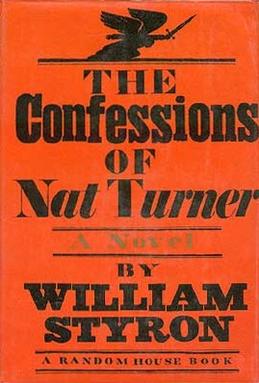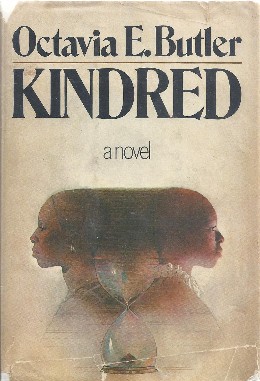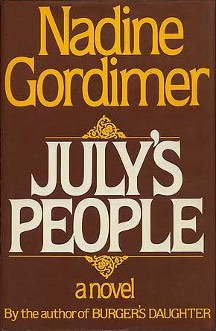
The Color Purple is a 1982 epistolary novel by American author Alice Walker that won the 1983 Pulitzer Prize for Fiction and the National Book Award for Fiction.

Native Son (1940) is a novel written by the American author Richard Wright. It tells the story of 20-year-old Bigger Thomas, a black youth living in utter poverty in a poor area on Chicago's South Side in the 1930s. Thomas accidentally kills a white woman at a time when racism is at its peak and he pays the price for it.

To Kill a Mockingbird is a novel by the American author Harper Lee. It was published in June 1960 and became instantly successful. In the United States, it is widely read in high schools and middle schools. To Kill a Mockingbird has become a classic of modern American literature; a year after its release, it won the Pulitzer Prize. The plot and characters are loosely based on Lee's observations of her family, her neighbors and an event that occurred near her hometown of Monroeville, Alabama, in 1936, when she was ten.

Frantz Omar Fanon was a French Afro-Caribbean psychiatrist, political philosopher, and Marxist from the French colony of Martinique. His works have become influential in the fields of post-colonial studies, critical theory, and Marxism. As well as being an intellectual, Fanon was a political radical, Pan-Africanist, and Marxist humanist concerned with the psychopathology of colonization and the human, social, and cultural consequences of decolonization.

Chester Bomar Himes was an American writer. His works, some of which have been filmed, include If He Hollers Let Him Go, published in 1945, and the Harlem Detective series of novels for which he is best known, set in the 1950s and early 1960s and featuring two black policemen called Grave Digger Jones and Coffin Ed Johnson. In 1958, Himes won France's Grand Prix de Littérature Policière.

I Know Why the Caged Bird Sings is a 1969 autobiography describing the young and early years of American writer and poet Maya Angelou. The first in a seven-volume series, it is a coming-of-age story that illustrates how strength of character and a love of literature can help overcome racism and trauma. The book begins when three-year-old Maya and her older brother are sent to Stamps, Arkansas, to live with their grandmother and ends when Maya becomes a mother at the age of 16. In the course of Caged Bird, Maya transforms from a victim of racism with an inferiority complex into a self-possessed, dignified young woman capable of responding to prejudice.
African American literature is the body of literature produced in the United States by writers of African descent. It begins with the works of such late 18th-century writers as Phillis Wheatley. Before the high point of enslaved people narratives, African American literature was dominated by autobiographical spiritual narratives. The genre known as slave narratives in the 19th century were accounts by people who had generally escaped from slavery, about their journeys to freedom and ways they claimed their lives. The Harlem Renaissance of the 1920s was a great period of flowering in literature and the arts, influenced both by writers who came North in the Great Migration and those who were immigrants from Jamaica and other Caribbean islands. African American writers have been recognized by the highest awards, including the Nobel Prize given to Toni Morrison in 1993. Among the themes and issues explored in this literature are the role of African Americans within the larger American society, African American culture, racism, slavery, and social equality. African-American writing has tended to incorporate oral forms, such as spirituals, sermons, gospel music, blues, or rap.

The Confessions of Nat Turner is a 1968 Pulitzer Prize-winning novel by American writer William Styron. Presented as a first-person narrative by historical figure Nat Turner, the novel concerns Nat Turner's Rebellion in Virginia in 1831, but does not always depict the events accurately. It is based on The Confessions of Nat Turner: The Leader of the Late Insurrection in Southampton, Virginia, a first-hand account of Turner's confessions published by a local lawyer, Thomas R. Gray, in 1831.
Lewis Ricardo Gordon is an American philosopher at the University of Connecticut who works in the areas of Africana philosophy, existentialism, phenomenology, social and political theory, postcolonial thought, theories of race and racism, philosophies of liberation, aesthetics, philosophy of education, and philosophy of religion. He has written particularly extensively on Africana and black existentialism, postcolonial phenomenology, race and racism, and on the works and thought of W. E. B. Du Bois and Frantz Fanon. His most recent book is titled: Fear of Black Consciousness.
Double consciousness is the dual self-perception experienced by subordinated or colonized groups in an oppressive society. The term and the idea were first published in W. E. B. Du Bois's autoethnographic work, The Souls of Black Folk in 1903, in which he described the African American experience of double consciousness, including his own.

Kindred (1979) is a novel by American writer Octavia E. Butler that incorporates time travel and is modeled on slave narratives. Widely popular, it has frequently been chosen as a text by community-wide reading programs and book organizations, and for high school and college courses.

Anti-Black sentiment, also called anti-Black racism, anti-Blackness or Negrophobia. It is characterized by prejudice, collective hatred, and discrimination or extreme aversion towards people who are considered Black people, such as sub-Saharan Africans, as well as a loathing of Black culture worldwide. Caused, among other factors, by racism and traumatic events and circumstances, symptoms of this form of xenophobia include, but are not limited to: the attribution of negative characteristics to Black and Coloured people; the fear or strong dislike or dehumanization of Black and Coloured men; and the objectification of Black and Coloured women.

Black Skin, White Masks is a 1952 book by philosopher-psychiatrist Frantz Fanon. The book is written in the style of autoethnography, with Fanon sharing his own experiences while presenting a historical critique of the effects of racism and dehumanization, inherent in situations of colonial domination, on the human psyche.
Nigrescence is a word with a Latin origin. It describes a process of becoming Black or developing a racial identity.

July's People is a 1981 novel by the South African writer Nadine Gordimer. It is set in a near-future version of South Africa where apartheid is ended through a civil war. Unlike Gordimer's earlier work, the novel was ignored by the apartheid government's censor, though the book's South African publisher was later raided by the Security Police.
The 1943 race riot in Beaumont, Texas was an anti-Black terrorist event that erupted on June 15, 1943 and ended two days later. It was related to wartime tensions in the overcrowded city, which had been flooded by workers from across the South. White workers from the Pennsylvania Shipyard in Beaumont attacked local black residents and destroyed their property following a rumor that a white woman had been raped by a black man. Two black men and one white man were killed in the widespread violence and more than 50 were injured. More than 200 were arrested and black residents were temporarily banned from going to work.
Black existentialism or Africana critical theory is a school of thought that "critiques domination and affirms the empowerment of Black people in the world". Although it shares a word with existentialism and that philosophy's concerns with existence and meaning in life, Black existentialism is "is predicated on the liberation of all Black people in the world from oppression". Black existentialism may also be seen as method, which allows one to read works by African-American writers such as W. E. B. Du Bois, James Baldwin, and Ralph Ellison in an existentialist frame. As well as the work of Civil Rights Activists such as Malcolm X and Cornel West. Lewis Gordon argues that Black existentialism is not only existential philosophy produced by Black philosophers but is also thought that addresses the intersection of problems of existence in black contexts.

I Am a Martinican Woman is a semi-autobiographical novel written by Lucette Céranus (1916–1955), under the pseudonym Mayotte Capécia, in the mid-twentieth century. It tells the story of Mayotte's childhood and young adulthood, including her relationship with a white officer who ultimately abandons her in Martinique with their son. The 1948 publication of this novel made Ceranus the first woman of color to publish a book in France. In 1949, the novel was awarded the Grandprix littéraire des Antilles.

Toward the African Revolution is a collection of essays written by Frantz Fanon, which was published in 1964, after Fanon's death. The essays in the book were written from 1952 to 1961, between the publication of his two most famous works, Black Skin, White Masks and The Wretched of the Earth. Fanon expands on the themes of colonization, racism, decolonization, African unity, and the Algerian Revolution in the essays, most of which come from his time writing for El Moudjahid, the official newspaper of the FLN.
The 1917 Chester race riot was a race riot in Chester, Pennsylvania, that took place over four days in July 1917. Racial tensions increased greatly during the World War I industrial boom due to white hostility toward the large influx of southern blacks who moved North as part of the Great Migration. The riot began after a black man walking in a white neighborhood with his girlfriend and another couple bumped into each other. This led to a fight in which the black man stabbed and killed the white man. In retaliation, white gangs targeted and attacked blacks throughout the city. Four days of violent melees involving mobs of hundreds of people followed. The Chester police along with the Pennsylvania National Guard, Pennsylvania State Police, mounted police officers and a 150-person posse finally quelled the riot after four days. The riot resulted in 7 deaths, 28 gunshot wounds, 360 arrests and hundreds of hospitalizations.












